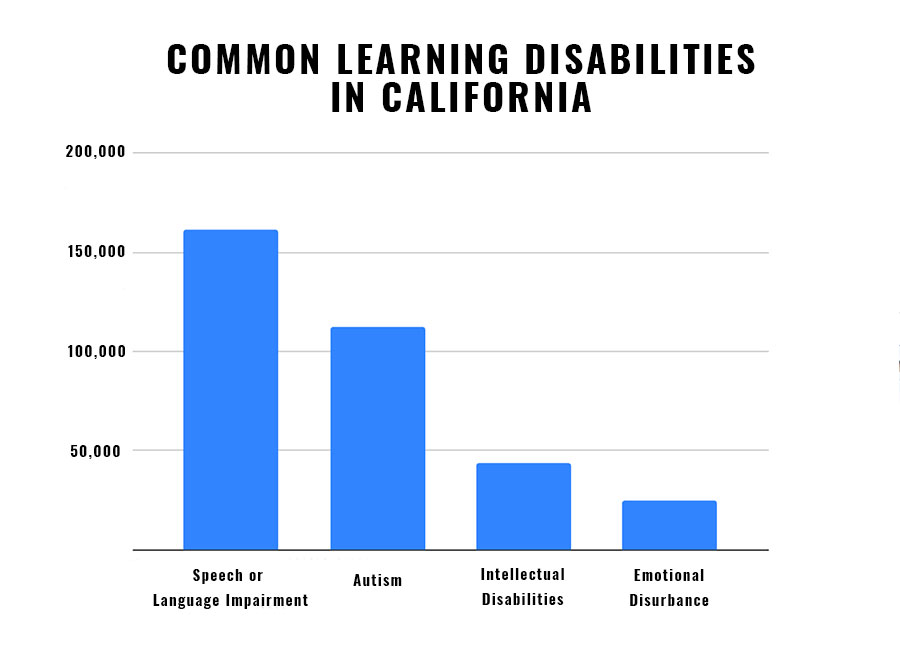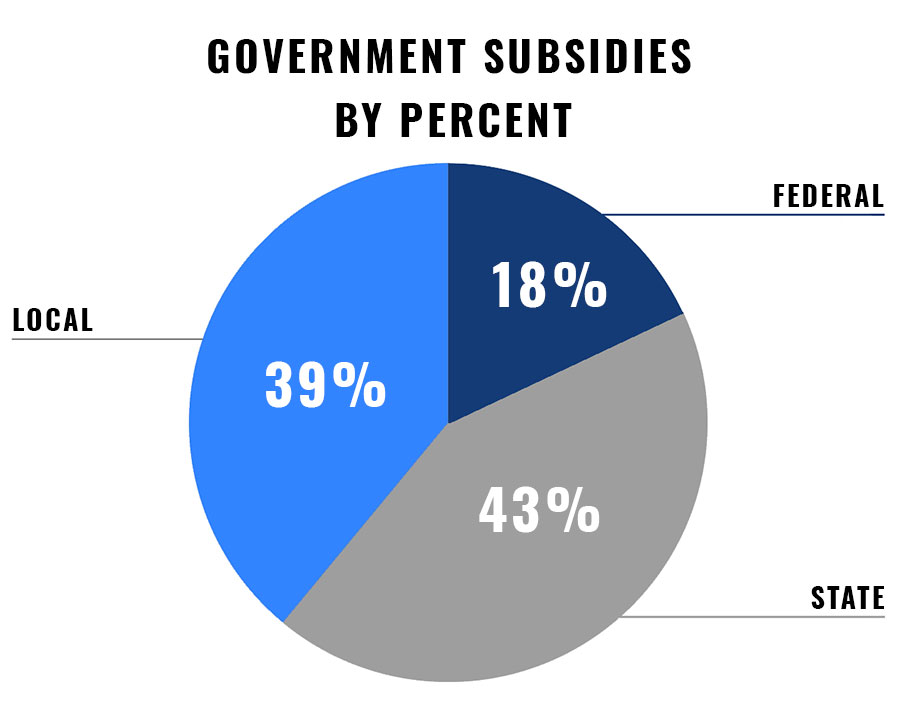Understanding California’s Special Education Laws

Special education encompasses many different specialized services provided for students with disabilities.
Specifically, disabilities can include dyslexia, speech impairment, chronic health problems, and autism. About 10% of California students receive some form of special education, which makes learning possible.
Read on to better understand special education law in California, and speak to a CA special education lawyer.
The Sources of California’s Special Education Laws
California’s special education laws have two sources: federal and state.
At this time, federal law is by far the most important and contains most of the regulations. Like other states, California is free to provide more services than what the federal government requires, and over the years, California has made small adjustments.
For example, federal law requires that students receive special education from ages 3 to 22 or until they graduate high school, whichever occurs first. However, California has required that services for 22-year-olds last until at least the end of their school term. In most cases, federal law contains the relevant provisions, and we will refer to both federal and state law as “California’s special education laws.”
Determining Who Receives Special Education
Schools must follow a well-defined process for identifying who should receive special education and what services they must receive:
-
Schools must first try to meet a student’s needs without special education. For example, they should attempt informal strategies such as Student Study Teams and Response to Intervention to identify and assist struggling students.
-
Schools need to evaluate whether the student has a disability that requires special education services. The student should undergo an evaluation, which should happen in 60 days. The evaluation will focus on whether the student’s disability interferes with their education.
-
Stakeholders form an IEP. If the evaluator recommends special education services, then stakeholders meet, including the student’s parents, special education teacher, general education teacher, evaluator, and school administrator. They come up with an IEP plan for providing special education.
Types of Disabilities
 A variety of disabilities might interfere with your child’s education. In California in 2017 to 2018, the most common include:
A variety of disabilities might interfere with your child’s education. In California in 2017 to 2018, the most common include:
- Autism: 112,318
- Deaf-blindness: 115
- Deafness: 3,242
- Emotional disturbance: 24,936
- Hard of hearing: 10,633
- Intellectual disabilities: 43,855
- Multiple disabilities: 7,161
- Orthopedic impairment: 10,453
- Other health impairment: 97,426
- Specific learning disability: 297,468
- Speech or language impairment: 161,485
- Traumatic brain injury: 1,618
- Visual impairment: 3,487
Required Parts of an IEP
Correspondingly, the IEP is the centerpiece of the student’s special education. The plan should define what services the school will provide for the student.
An IEP has required parts, including:
- Current status of the student.
- Goals for the student. These should be measurable annual goals.
- Progress measurements.
- Services provided to the student. This detailed section should include a start date, as well as discuss the frequency and location of services.
- Mainstreaming. The IEP should discuss how much the student will participate with nondisabled students in regular classes.
- Assessment plan. California constantly measures and assesses students using tests. The IEP should discuss what accommodations the student will need or alternate assessments they can take.
- Other considerations. Depending on the child’s situation, the IEP can discuss career goals, specialized equipment or transportation, English language development, or extended services.
Some disabled children will also need other plans, such as a Section 504 plan to cover things like wheelchair ramps or tape recorders for note taking.
Does Your Child Need Help?
We will fight for your child. Schedule a Free Consultation today.
Services Offered To a Student with Disabilities
The services offered are tailored to the student’s needs. However, below are the most common special education services:
- Specialized academic instruction
- Speech and language therapy
- Occupational therapy
- College awareness
- Career awareness
- Adapted physical education
- Vocational assessment
- Behavioral treatment
- Individual therapy
- Training in independent living skills
Special Education Services and Private School
Many California residents send their disabled children to private schools. Nevertheless, disabled children in private schools would still benefit from government services. Fortunately, private school students can access special education services. However, these services often are offered only in a public school setting.
For example, your child might need to go to a public school to receive speech or occupational therapy and then return to their private school for the remainder of the day. As a result, students in private schools might receive fewer services than they would in public school.
Mainstreaming Disabled Students
 A key feature of special education laws in California is the requirement that children learn in the “least restrictive environment” (LRE).
A key feature of special education laws in California is the requirement that children learn in the “least restrictive environment” (LRE).
Essentially, this means that children receiving special education cannot be sent to an isolated room and left there, completely cut off from the rest of the school. Instead, children should learn with their nondisabled classmates as much as is possible. Under the California education code, special education services can only be offered in isolated rooms if the nature and severity of the child’s disabilities warrant it.
In California, about half of all students with disabilities spend about 80% of their time with their classmates in regular classrooms. In reality, this rate is a little lower than the rate in other states, but California has committed to increasing it.
How Special Education Services are Provided
Because many schools in the state are small, it is not realistic that each school administer its own special education services.
For this reason, California uses regional organizations to provide special education services. Actually, there are 127 Special Education Local Plan Areas (SELPA) for 1,000 school districts in the state. Be that as it may, larger districts have formed their own SELPAs, but most are a mix of local school districts and charter schools.
The costs of educating a student with disabilities are higher than other students–$22,300 compared to $9,600 (as of 2011). Although some disabled students require minimal services, other require intensive services that far exceed the $22,300 average.
 Local, state, and federal funds pay for special education services. However, the contribution from California and the federal government only covers a fraction of the costs, so local districts will need to make up the difference from their unrestricted general funds. As a result, in California, the total cost of special education services was $8.6 billion in 2011, and the costs split this way:
Local, state, and federal funds pay for special education services. However, the contribution from California and the federal government only covers a fraction of the costs, so local districts will need to make up the difference from their unrestricted general funds. As a result, in California, the total cost of special education services was $8.6 billion in 2011, and the costs split this way:
- Federal government: 18%
- State government: 43%
- Local districts: 39%
Enforcing Special Education Laws
Sometimes, schools might try to deny special education services out of a desire to save money, though other times legitimate disagreements crop up about what the special education law in California requires.
For example, disagreements can break out over what services should be provided in the IEP. For example, parents might want additional (or different) services offered, while the remaining members of the team disagree. In this situation, parents can file a complaint with the state’s Office of Administrative Hearing (OAH). Following the initial disagreement, there is a series of steps the parties will take to resolve the dispute, including:
- Dual-party resolution sessions
- Formal mediation sessions
- Due process hearings before an OAH administrative law judge
Very few cases ever reach the due process hearing. Instead, the parties typically resolve their issues or the parents withdraw the complaint.
A different dispute resolution process proceeds if a disagreement arises over how the IEP is implemented. In this situation, parents or students might file a complaint with the California Department of Education (CDE), which monitors compliance with California special education law. The CDE might also find problems on its own when performing an audit of a school. In these cases, CDE tries to fix noncompliance by implementing a corrective action plan.
Consult with an Experienced CA Special Education Attorney
Disputes can and will arise between parents and school districts regarding the provision and implementation of special education services. If you have concerns, you should speak with an experienced special education legal practitioner in Monterey.
At the Allen Law Firm, we have represented clients for over 20 years, and we are intimately familiar with the California education code for special education. Contact us today to schedule your consultation.

Scott Allen is the founder of Allen Law Firm. Scott earned his Juris Doctor degree from the Boalt Hall School of Law (now known as Berkeley Law) at the University of Berkeley in California and has over 20 years of experience practicing personal injury law. He is a member of the State Bar of California and has earned a Superb rating by Avvo. To learn more about Scott, read his full bio here.

